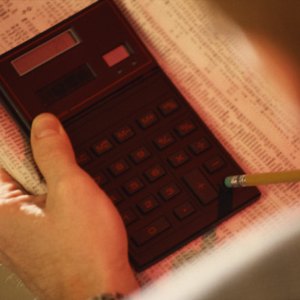
Like investing in any other financial securities, bonds or equity, the required return of a preferred stock changes over time as the risk of the preferred stock perceived by investors becomes higher or lower. To calculate the required return of a preferred stock, investors compare the amount of dividend received to the price of the preferred stock as traded at the time. The dividend amount is set when the stock is issued and will not be changed in the future. Therefore, as the stock price goes up or down, the required return decreases or increases.
Risk of Preferred Stock
Based on the risk assessment of its preferred stock, the issuer decides on the amount of dividend that it believes is comparable to the level of risk that investors are subject to. For example, to compensate shareholders for the higher risk of preferred stock than that of the issuer's debt, the rate of preferred dividend is often set larger than interest rate on borrowing. Preferred dividend is stated either as a percentage of the par value of the preferred stock or a dollar amount per share.
Cost of Preferred Stock
The cost of a preferred stock to the issuer is also the initial required return of the preferred stock by investors at the time of the stock issuance, calculated as the amount of dividend divided by the stock's issuing price. When a preferred stock is issued at par, the cost of preferred stock is effectively the rate of the preferred dividend. Assume a preferred stock pays $12 in dividend and the issuing price is $100 per share. The cost of the preferred stock would be $12/$100 = 12 percent. The current required return can be compared to the initial cost or dividend rate to see how the preferred stock has performed over time.
Price of Preferred Stock
To calculate required return of a preferred stock, the price of the preferred stock must be a known component in addition to the dividend amount. Though not as volatile as prices of common stocks, the price of a preferred stock can change over time, higher or lower than its initial issuing price. Price movement of a preferred stock indicates that investors' view on the risk of the stock has changed and they are willing to pay more or less for the stock.
Return of Preferred Stock
Required return of a preferred stock is also referred to as dividend yield, sometimes in comparison to the fixed dividend rate. Suppose the price of the preferred stock with a dividend rate of 12 percent and originally issued at $100 is now traded at $110 per share. The current required return of the preferred stock would then be $12/$110 = 10.91 percent. As the stock price goes up, the required return has come down, suggesting that investors don't see the risk of the stock as high as it was before and are willing to pay more for a safer investment.
References
- Office of Investor Education and Advocacy. "Stocks." Accessed Feb. 12, 2020.
- Charles Schwab. "Preferred Securities: Higher Yields, Different Risks." Accessed Feb. 12, 2020.
- Office of Investor Education and Advocacy. "Investor Bulletin: Interest Rate Risk—When Interest Rates Go Up, Prices of Fixed-Rate Bonds Fall." Accessed Feb. 12, 2020.
- Nasdaq. "Cumulative Preferred Stock Definition." Accessed Feb. 12, 2020.
- Nasdaq. "Dividend in Arrears Definition." Accessed Feb. 12, 2020.
- Nasdaq. "Noncumulative Preferred Stock Definition." Accessed Feb. 12, 2020.
- The Goldman Sachs Group, Inc. "1,500,000 Depositary Shares Each Representing 1/25th Interest in a Share of 5.00% Fixed-to-Floating Rate Non-Cumulative Preferred Stock, Series P," Page 112. Accessed Feb. 12, 2020.
- S&P Dow Jones Indices. "S&P U.S. Floating Rate Preferred Stock Index." Accessed Feb. 12, 2020.
- Office of Investor Education and Advocacy. "Convertible Securities." Accessed Feb. 12, 2020.
- Nasdaq. "Participating Preferred Stock Definition." Accessed Feb. 12, 2020.
Writer Bio
An investment and research professional, Jay Way started writing financial articles for Web content providers in 2007. He has written for goldprice.org, shareguides.co.uk and upskilled.com.au. Way holds a Master of Business Administration in finance from Central Michigan University and a Master of Accountancy from Golden Gate University in San Francisco.

